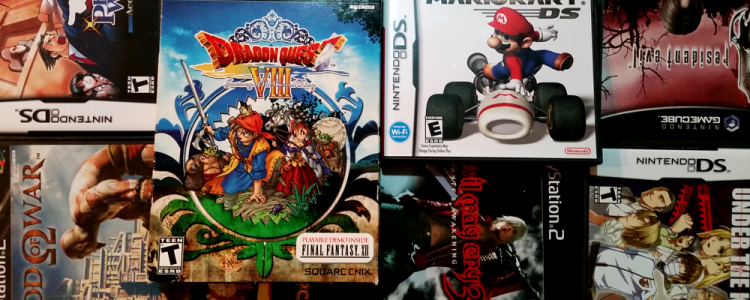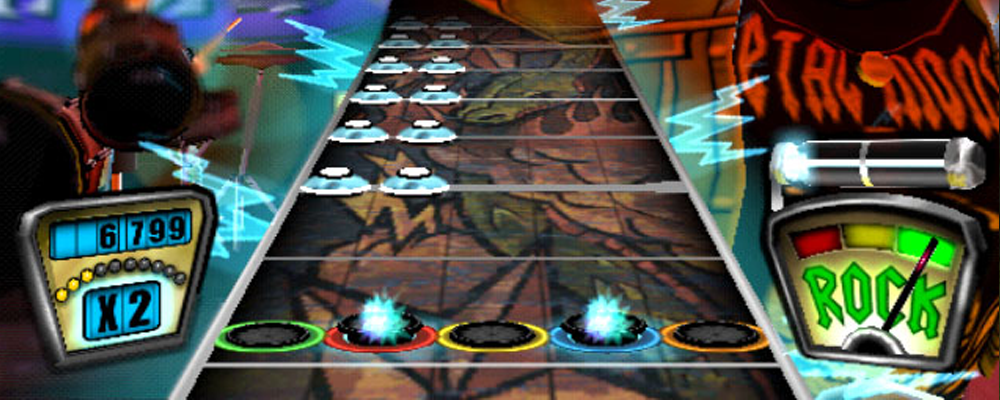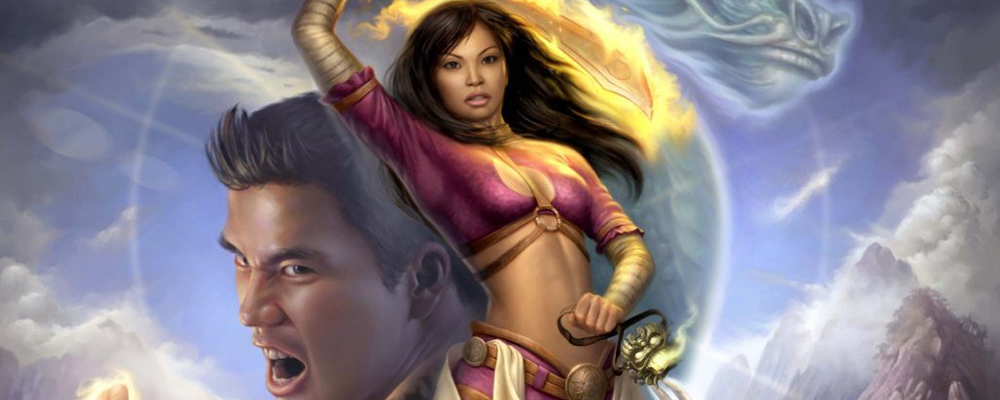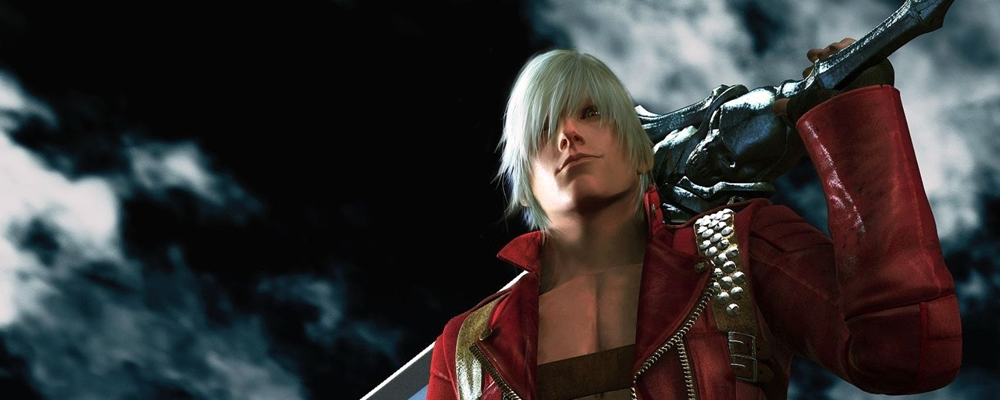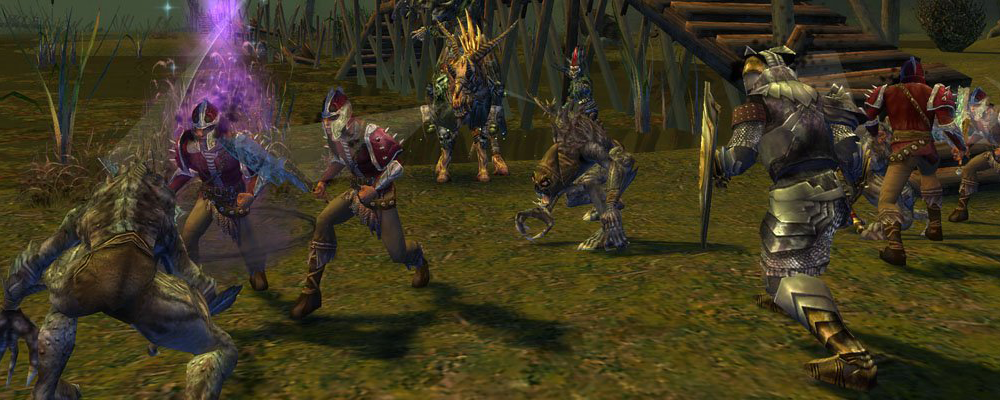Guitar Hero
Developer: Harmonix
Publisher: RedOctane
System: PlayStation 2 (November 8, 2005)
Considering the machine of DLC songs that the plastic-instrument genre eventually became, it’s important to remember the work of passion that the original Guitar Hero was.
Developer Harmonix recognized everyone’s desire to shred along to our favorite songs and condensed their complex cords into five-button patterns. Star power, a live audience, and even the flubs of missed notes immersed you into the gameplay and made you want to perfect each tune.
What made Guitar Hero work, however, was the set list. Rather than rely on the alternative bands that supplied most licensed music in the medium, Harmonix got the rights to some of rock ‘n’ roll’s greatest hits — even if it had to settle for covers. “I Wanna Be Sedated.” “Killer Queen.” “Smoke on the Water.” It exposed a new generation to classic artists and made the music industry want to join in on the sequels.
Where are they now?
Activision bought the series, while Harmonix created Rock Band to expand the concept to a full ensemble. Both brands faded from popularity after years of competition, but they are now seeking a comeback with Guitar Hero Live and Rock Band 4.
Chris Hoadley — Writer and Community Moderator
Phoenix Wright: Ace Attorney
Developer: Capcom
Publisher: Capcom
System: Nintendo DS (October 12, 2005)
Before the modern resurgence of the adventure game, the genre was in slump for a long time. Adventure games were still coming out in 2005, but they weren’t getting the spotlight.
Phoenix Wright: Ace Attorney made pointing-and-clicking seem new again, taking (very, very loose) inspiration from the Japanese judicial system. The writing was smart, the characters endearing, and the localization surprisingly great, making sure this franchise would stick around long enough to see five more games in the U.S.
The way it bent the rules of law to make a case more dramatic could be a cheesy at times, but it was worth it to see some incredible turnabouts happen.
Where are they now?
The series took a five-year recess between Apollo Justice: Ace Attorney and Phoenix Wright: Ace Attorney — Dual Destinies, but now it’s back with a new game set in Japan’s post-feudal Meiji Era.
Jade Empire
Developer: BioWare
Publisher: Microsoft
System: Xbox (April 12, 2005)
In between sending players on one role-playing space adventure or another, BioWare introduced audiences to Imperial China and the Wuxia martial arts with Jade Empire. Fighting wasn’t just a direct method of real-time problem-solving but also an integral part of the narrative. We discover new martial arts styles, techniques, weapons, and even magical transformations for our Chi-infused characters throughout the campaign, with experience herded into either Mind, Body, or Spirit statistics.
We didn’t seem to notice how rife the RPG was with pulp science-fiction and medieval fantasy-inspired stories and worlds until someone took the risk of taking us somewhere else. The Jade Empire gamble didn’t pay off as well as it should have for BioWare’s finances, but the loving homage still retains a spot in many a gamer’s heart.
Where are they now?
Jade Empire got a special edition version for the PC in 2007. While a sequel has yet to materialize, developers at Bioware have kept hope alive in interviews as recent as this past March.
Devil May Cry 3
Developer: Capcom
Publisher: Capcom
System: PlayStation 2 (February 17, 2005)
As games became easier in order to appeal to wider audience, Japanese developers were giving us some of the hardest games of all time. 2004 gave us Ninja Gaiden, and 2005 begot Devil May Cry 3, one of the few games that will still kick your ass on easy difficulty.
But Devil May Cry 3 was more than hard; its combo system was as intricate as it was adaptive, letting you switch between multiple weapons mid-swing in order to get those coveted “SSStylish!” combos. Devil May Cry 3 finally gave the franchise enough substance to match its style, and trust us, it had plenty of style.
Where are they now?
The franchise got a recent reboot with DmC: Devil May Cry, while director Hideaki Itsuno has gone on to work on the Dragon’s Dogma series.
Guild Wars
Developer: ArenaNet
Publisher: NCSoft
System: PC (April 26, 2005)
Guild Wars rocked massively multiplayer online RPGs when it was released for one simple reason: Unlike most other such games on the Western market, it didn’t require a paid subscription beyond the game’s actual price, helping to launch the massive wave of free-to-play MMOs in this country.
The fantasy game also focused heavily on player-vs.-player (PvP) combat, much more so than games like EverQuest or World of Warcraft (which only launched the year before — and provided some of the developers that built Guild Wars). PvP combat took place in teams with a variety of modes, which added a heavily social aspect to a game that generally avoided traditional maximum-level raids. Players could even create a max-level character with terrific gear specifically for PvP.
Guild Wars also broke new ground in MMO graphics, creating some oh-so-pretty-for-the-time character designs. It never led MMOs in either East or West, but it scooped up a pile of awards and sold millions of copies.
Where are they now?
Guild Wars spun off a variety of expansion packs and three novels before a sequel, Guild Wars 2, came out on 2012. GW1 servers were automated in 2013, so gamers are still playing both.
